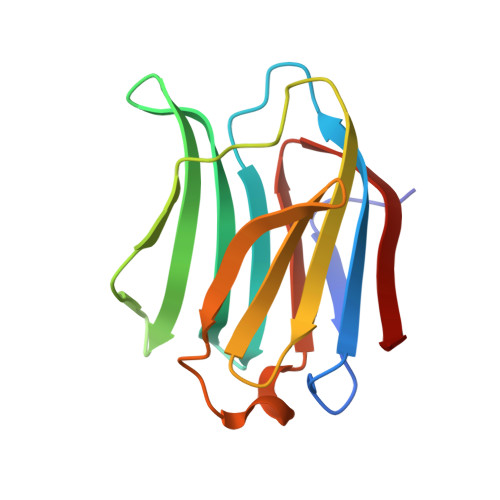Current status and future opportunities for serial crystallography at MAX IV Laboratory.
Shilova, A., Lebrette, H., Aurelius, O., Nan, J., Welin, M., Kovacic, R., Ghosh, S., Safari, C., Friel, R.J., Milas, M., Matej, Z., Hogbom, M., Branden, G., Kloos, M., Shoeman, R.L., Doak, B., Ursby, T., Hakansson, M., Logan, D.T., Mueller, U.(2020) J Synchrotron Radiat 27: 1095-1102
- PubMed: 32876583
- DOI: https://doi.org/10.1107/S1600577520008735
- Primary Citation of Related Structures:
6Y2N, 6Y4C, 6Y78 - PubMed Abstract:
Over the last decade, serial crystallography, a method to collect complete diffraction datasets from a large number of microcrystals delivered and exposed to an X-ray beam in random orientations at room temperature, has been successfully implemented at X-ray free-electron lasers and synchrotron radiation facility beamlines. This development relies on a growing variety of sample presentation methods, including different fixed target supports, injection methods using gas-dynamic virtual-nozzle injectors and high-viscosity extrusion injectors, and acoustic levitation of droplets, each with unique requirements. In comparison with X-ray free-electron lasers, increased beam time availability makes synchrotron facilities very attractive to perform serial synchrotron X-ray crystallography (SSX) experiments. Within this work, the possibilities to perform SSX at BioMAX, the first macromolecular crystallography beamline at MAX IV Laboratory in Lund, Sweden, are described, together with case studies from the SSX user program: an implementation of a high-viscosity extrusion injector to perform room temperature serial crystallography at BioMAX using two solid supports - silicon nitride membranes (Silson, UK) and XtalTool (Jena Bioscience, Germany). Future perspectives for the dedicated serial crystallography beamline MicroMAX at MAX IV Laboratory, which will provide parallel and intense micrometre-sized X-ray beams, are discussed.
- MAX IV Laboratory, Lund University, Fotongatan 2, Lund 22484, Sweden.
Organizational Affiliation:



















